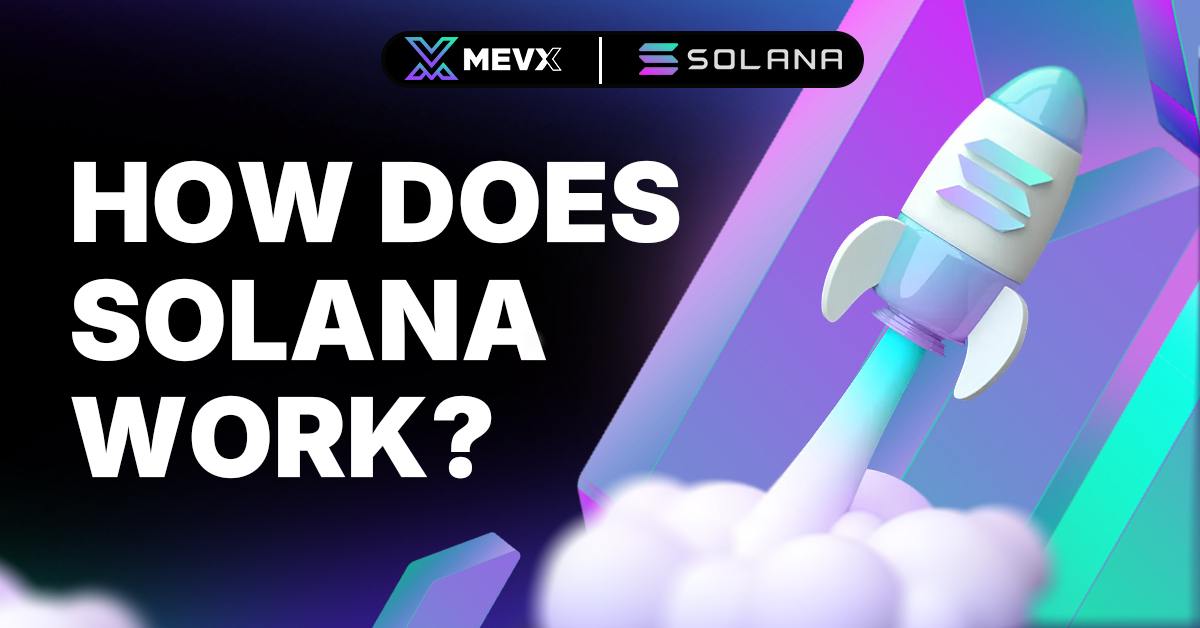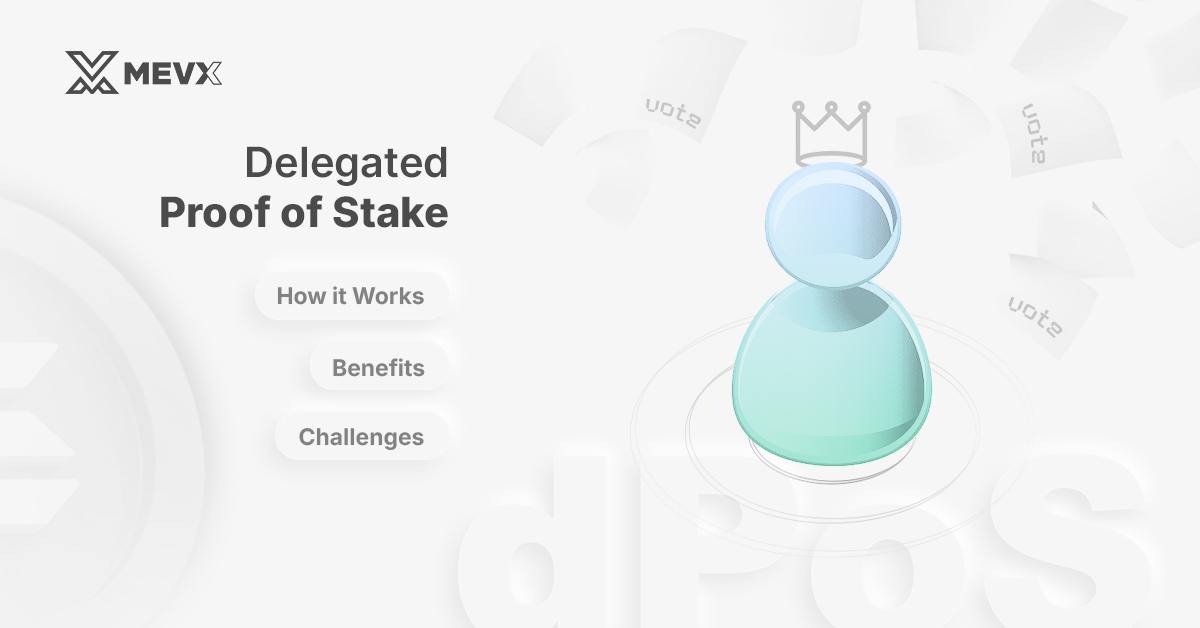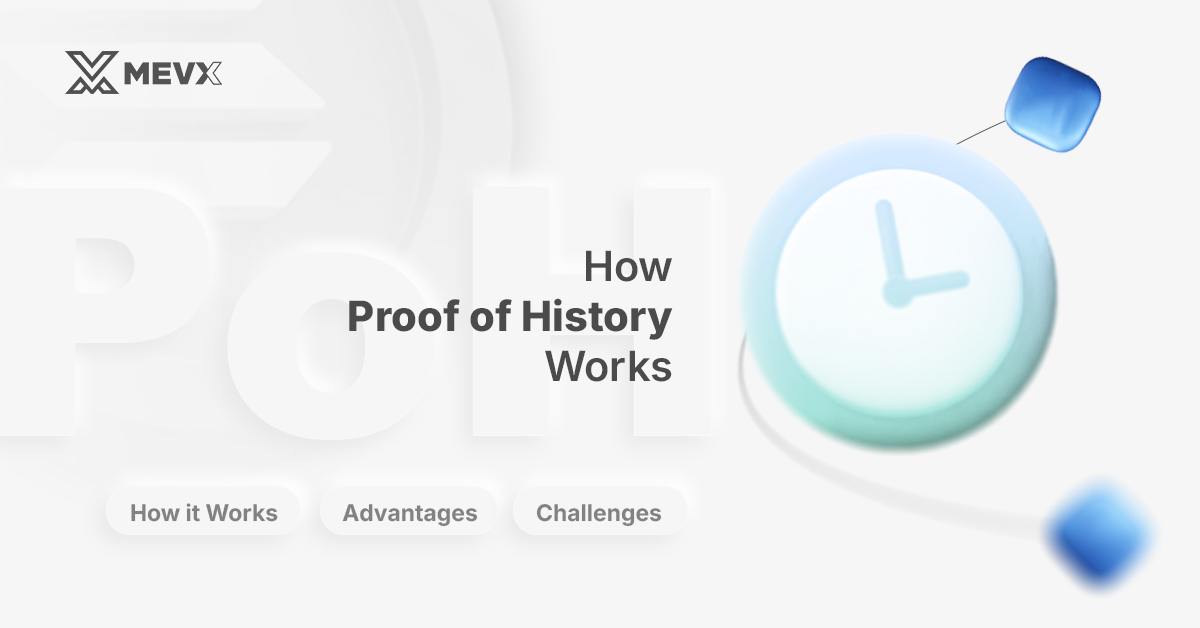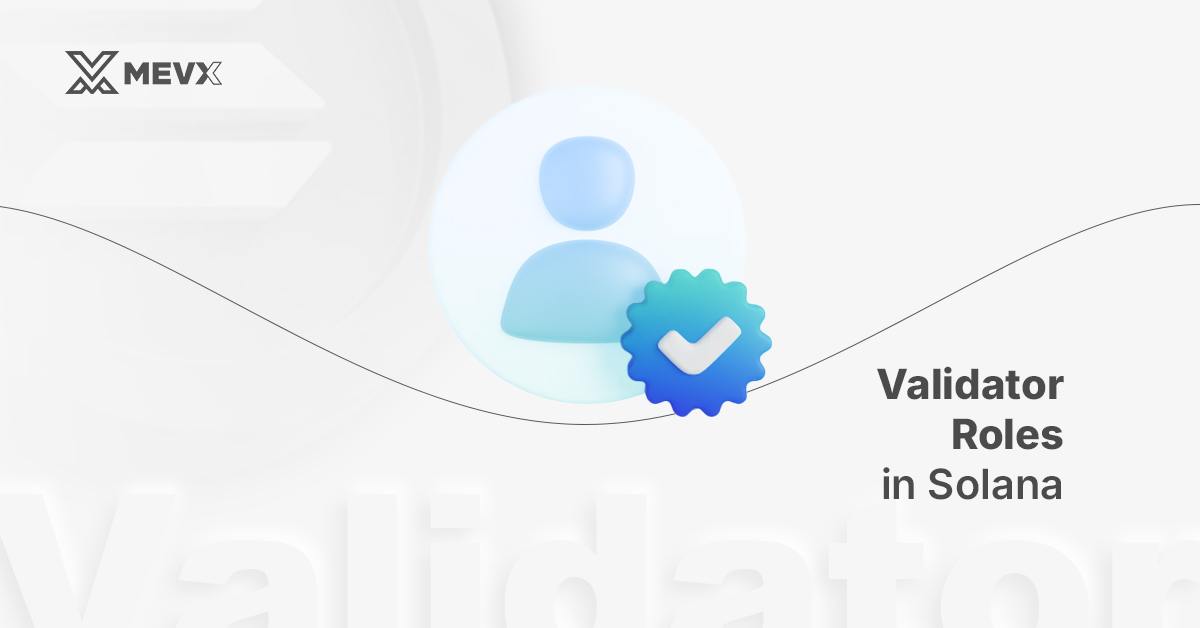Solana was born out of the need to address the scalability challenges faced by early blockchain platforms like Bitcoin and Ethereum. While these networks brought revolutionary changes by introducing decentralized systems, they also encountered significant limitations, particularly in terms of speed, cost, and scalability. Solana’s creation was driven by the desire to solve these issues and make blockchain technology scalable and accessible to the masses. This article will delve into how Solana works, focusing on its core components: its consensus mechanisms, the groundbreaking Proof of History (PoH) system, and the pivotal role that validators play in maintaining the network.

How does Solana work?
Key Features of Solana
This section briefly presents some of Solana’s important aspects that predispose developers or users to its adoption.
- Proof of History: A new standard in technology that allows one to date and arrange events – in this case, network transactions.
- Delegated Proof of Stake (dPoS): This is Solana’s consensus mechanism. As the name indicates, it enables users to assign their portion of the stake to the validators, preserving the network’s security.
- Validators: These groups of people in Solana are critical to the system since they generate consensus by confirming the transactions within the network and securing the chain as well as supporting the high performance of the system.
What is Solana?
Solana is a high-velocity blockchain whose primary purpose is to provide a platform for building dApps at an unmatched level of speed, scalability, and affordability. Another aspect that stands out about Solana is the fact that it supports over 65000 transactions per second, which outstrips quite several other blockchain networks such as Ethereum and Bitcoin.
This performance is achieved through a combination of its consensus model and a unique feature called Proof of History. It is also worth noting that such low transaction fees can be an added advantage for the platform allowing developers to create hundreds of different applications from DeFi to NFT and game development.
Solana’s Consensus Mechanisms
This consensus mechanism is among the key types of innovations no 2 governments must be aware of since it turns out to be among the primary pillars that have positioned Solana as the fastest blockchain in the world. More particularly, what Solana has is a combination of a Delegated Proof of Stake (dPoS) – which is a type of Proof of Stake system, and a Proof of History (PoH). These performance metrics drive Solana’s TPS performance to an astounding 65,000 transactions per second with additional features conducive to the running of games high-order applications dApps high-frequency trading and other demanding use cases.
Let’s dive deeper into how these two mechanisms work together to form the backbone of Solana’s high-performance blockchain.
1. Delegated Proof of Stake (dPoS)
Solana’s Delegated Proof Of Stake (dPoS) model is a step forward from the other PoS models that can be found on blockchains like Ethereum 2.0 and Cardano. While in PoS, users are allowed to stake their tokens to participate in validating transactions, in dPoS there is the added feature of delegation whereby token holders endorse some selected validators who will do the validation.

Delegated Proof of Stake
How Delegated Proof of Stake (dPoS) Works on Solana:
- Voting Power Delegation: Instead of every token holder participating in the validation process, every Solana token holder can delegate around this validation process by providing their staked SOL tokens to a validator. Validators are those nodes within the network that carry out the work of checking transactions and maintaining the security of the blockchain. The more delegated SOL tokens a potential validator has, the more chances that the validator will be included in the block production.
- Validator Selection: In dPoS, validation and proposal of blocks are done by selected members that uphold core activities. The members fulfilling the core activities are selected based on how many of the total SOL tokens that are staked are in their favor. This in turn guarantees that only legitimate and credible (determined by the community) validators will be left accountable for the security of the network.
- Incentive Mechanism: The validators are paid with SOL tokens as a reward as a way of encouraging and compensating the actors for validating the blocks and adding them to the blockchain. Through delegating SOL funds, under ‘delegation’, delegators (for example, users of the platform) also earn some rewards that are proportional to the stake. There exists a reward scheme for the validators for them to play the game without being tempted to cheat, slashing may happen if they try to act harmfully and that will mount to losing their credibility in the network as well.
Benefits of dPoS in Solana
- Efficiency: Instead of requiring active participation of a verifiable large number of users like other systems, the dPoS system in Solana relies on a handful of trustworthy validators to come to consensus and improve on the rate of processing of transactions most notably compared to PoS systems.
- Scalability: Solana can grow in size with the use of a dPoS system even if the emphasis is on increased centralization. While block-producing privileges are selectively limited to a few validators, holders of SOL tokens may still engage in governance by stakeholder delegation to their favorite validator.
- Governance: There is a direct trade-off between a user’s stake in the dPoS governance and the number of tokens obtained from staking by the user. There is a nonce in dPoS that allows token holders a vote on who the bearer of the validating work and to secure the network. applicants performing poorly or with intentions to harm do apply for the position of validating applicants but they can be voted out by token holders if they choose to un-delegate their tokens from such validators.
- Energy Efficiency: Solana Implement dPoS Mechanism needs less energy than how it is conducted in Bitcoin which is also a plus for the environment and cost. Mining or carrying out some sympathetic competition is unnecessary for the validators, which comes down to the previously stated one dry throat of energy output.
Challenges with dPoS
- Centralization Risk: Since dPoS relies on a smaller number of validators, there’s a potential risk of centralization if too much stake is delegated to a few validators. This could reduce the level of decentralization and increase the risk of collusion.
- Validator Collusion: In theory, if the majority of staked tokens are concentrated among a few validators, they could collude to act maliciously or influence decisions that may not benefit the broader network. However, mechanisms such as slashing penalties help mitigate this risk
2. Proof of History (PoH)
PoH serves to enhance the dPoS system of Solana by providing an altogether new feature. In simple terms, PoH is not a consensus mechanism. It is simply a way of cataloging and dating all transactions before the validators go about validating them. It is a verifiable historical record of a list of events which also gives evidence as to the time gap between such events. This innovation reduces the need for the validators to constantly reach out to each other to come to a consensus on the order of the transactions and this in turn leads to accelerating the rate at which this consensus is reached.
PoH also has a few other important characteristics, which revolve around the efficiency of latency mechanisms.

Proof of History
How Proof of History (PoH) Works
- Cryptographic Clock: PoH uses a cryptographic hash function (SHA-256) to create a sequence of hashed outputs that serve as timestamps. Each new hash output is dependent on the previous one, forming a verifiable chain that proves the passage of time. This chain of hashed outputs acts as a decentralized clock that validators can use to quickly verify the order of transactions without needing to communicate directly with one another.
- Timestamping of Transactions Using PoH: It takes input combines it with a sequential number and outputs a transaction in the PoH timestamping mechanism. Hence this enables guarantees on the time and order in the occurrence of all events on a certain blockchain and enforces precise ordering in the installation of payments.
- Efficiency of Consensus: With the use of PoH, Solana validators can use much of their time and resources verifying the transactions rather than communicating and coordinating among themselves since they are pre-ordering transactions first. This lowers network latency and allows Solana to process thousands of transactions in a second before taking a break.
Advantages of PoH in Solana
- High Throughput: PoH’s greatest advantage has got to be that it allows Solana to achieve very high throughput. PoH eliminates the need for such coordination, as the order is already set in the past, and that is why 65000 transactions are effortlessly processed by Solana in a second.
- Low Latency: Because of the preordering feature of PoH, the period within which the validators can verify any transactions is significantly reduced. Effectively, this makes it possible for near real-time transaction finality, and therefore Solana is among the fastest blockchains available in the market.
- Improved Scalability: PoH’s ability to handle large volumes of transactions without the need for complex communication between nodes allows Solana to scale without compromising security or decentralization. This makes it ideal for a wide range of use cases, from DeFi protocols to high-frequency trading and gaming.
- Security Through Cryptography: One of the properties of PoH that is reliant on timing is that it is possible to timestamp transactions and thus provide an accurate time frame within which the action occurred thus not allowing the change of such transactions through PoH.
Challenges with PoH
- Complexity: The PoH mechanism is an entirely new concept that is also highly intricate in the blockchain ecosystem. It’s not something that can easily be adopted since it takes a considerable understanding of both cryptography and the architecture of the blockchain.
- Reliability on Validators: Should validators be compromised, then the security of the network will still be under some threat.
3. The Efforts That Made dPoS and PoH Work for the Best
The true power of Solana lies in how Delegated Proof of Stake (dPoS) and Proof of History (PoH) work together to optimize the network’s performance.
- Validator Efficiency: In the traditional Proof of Stake-based blockchain the concept of order within transactions is vital and often validators spend additional time convincing each other about the order in which the transactions should be processed. With PoH, Solana validators are given transactions that have been time-stamped and pre-loaded into an app, thereby obviating the communication of the many validators constantly. This makes consensus rather faster and more efficient.
- High-Speed Finality: Since the ordering of transactions occurs before they are submitted to validators, validation becomes simple and fast. Transaction finality (Refers to the confirmation of the transaction and firsthand introduction of this transaction on the blockchain) is achieved in a few seconds by Solana, which is quite an improvement as it takes several minutes for a network such as Ethereum to secure graduation.
- Reduced Bandwidth: Solana greatly reduces the bandwidth that needs to be devoted to maintaining the network by removing the requirements for the validators to communicate with each other on a coordinated, real-time basis. This is in Solana’s interests as this means the network can support very high transaction volumes without being choked by traffic on the network.
Validator Roles in Solana
The security and efficiency of the Solana network are provided to a great extent by the Validators. They do not only perform verification of transactions but also make sure the network functions properly and securely at all times even without user intervention.

Validator Roles in Solana
Responsibilities of Validators
- Transaction Validation: The actions undertaken by the validators consist of confirming transactions placed on the payments system. They verify that all the undertaken steps of transactions are valid, and according to the specific order set by the Proof of History. After they validate the transactions, they append these transactions to the new blocks ready for adding to the distributed ledger.
Securing the Health of the Network: Validators are active participants in the PoH sequence to mitigate manipulation or double-spending of the system and hence strengthen the network. Every validator’s format is concrete to the information chain to be interfered with. - Earning Rewards: Validators are rewarded through the Solana (SOL) token. They receive earnings relating to the level of work done by them and therefore avails the need for people to be honest on duty for better performance. In some cases, for instance, where a validator is unable to validate correctly, penalties will follow or loss of allocated stakes.
- Decentralization & Delegation: Even though there is a dPoS system in Solana, the Validators have to perform their functions with a degree of decentralization. SOL token shows the allegiance of its holders and, if they choose to, they may appoint validators they deem trustworthy and work through them. This method of allowing delegation guarantees that the security of the network is supported even by people who do not have validator nodes.
How Validators Maintain Scalability
The reason why validators verify transactions across Solana is because of the support of PoH infrastructure. This system makes it possible for the nodes to process transactions in a very short time without necessitating overly excessive communication with other nodes which is a bottleneck task in other consensus systems such as PoW or PoS.
Conclusion
What makes Solana unique compared to other blockchain technologies is its dual use of Proof of History and Delegated Proof of Stake. This allows Solana to work in a faster and more efficient manner than other existing models. Solana boasts the research, development, and implementation of the modern blockchain that enables the network to perform up to 65000 transactions per second with great levels of security and decentralization. Validators, whose operations are based on PoH and dPoS, are vital in the functioning of the network as they are rewarded for their services while keeping the system flexible for contemporary distributed applications.
Share on Social Media:
